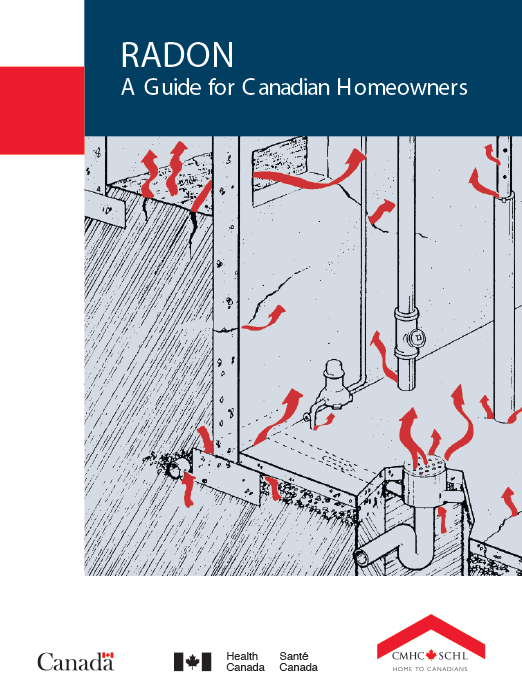RADON CONTROL Canada's Radon Experts
HIGH RADON? CALL 1-888-749-0770
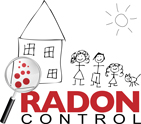
What is Radon?
Radon gas is colorless, odorless and tasteless radioactive gas. It is formed by the breakdown of uranium, a natural radioactive material found in soil, rock and groundwater.
Radon gas escapes from the ground into the outdoor air. It is diluted to low concentrations and is low concern. However, radon that enters an enclosed space, such as your home, can sometimes accumulate to high levels. Radon gas breaks down to form additional radioactive particles called “progeny” (Polonium-218, Lead-214, Bismuth-214, Polonium-214) that can contaminate the air you breathe.
Concern in Canada about indoor radon gas levels began in the mid-1970s. Some houses in communities where uranium ore was either processed or mined were found to have high radon concentrations. After this discovery, Canadian Government surveyed the radon levels in 14,000 houses in 18 cities across Canada. Also, some smaller communities have been identified by provincial government agencies as having the potential for high radon concentrations in dwellings.
The majority of homes surveyed showed low concentrations of radon gas. However, significant minority of houses in some locations were found to have very high levels of radon gas.
Source: RADON: A Guide for Canadian Homeowners
What is the Risk of Radon Exposure?
Radon and radon progeny in the air can be breathed into the lungs where they break down further and emit “alpha particles”. Alpha particles release small bursts of energy which are absorbed by nearby lung tissue. This results in lung cell death or damage.
When lung cells are damaged, they have the potential to result in cancer when they reproduce. Cancers caused by radioactivity are started by chance and not everyone exposed to radon gas will develop lung cancer. The time between exposure and the onset of the disease is usually many years.
Your risk of developing lung cancer from radon exposure depends on the concentration of radon gas in the air you breathe and the length of time you are exposed. Until very recently, the estimate of the risk from radon gas in homes was uncertain. However, two recent independent studies in North America and Europe have confirmed that the lung cancer risk extends downward to radon levels as low as 200 Bq/m3.
Source: RADON: A Guide for Canadian Homeowners
Note:
Canadian action level: 200 Bq/m3
US action level: 150 Bq/m3
World Health Organization: 100 Bq/m3
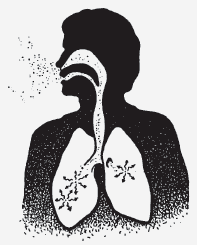
What is the Effect of Smoking?
Tobacco smoking is the major cause of lung cancer – it is responsible for about 83 per cent of all lung cancer deaths in males and females.
The National Cancer Institute of Canada estimated deaths from lung cancer in 2006 as: 10,700 men and 8,600 women. In 16 per cent of these cases, radon would have caused the lung cancer.
Exposure to radon and tobacco use may combine to increase the risk of lung cancer. Research has compared the cancer rates in smoking and nonsmoking uranium miners. Results indicate that smoking promotes earlier development of lung cancers that may have been caused by radon gas.
.
Source: RADON: A Guide for Canadian Homeowners
A Personal Evaluation of Radon Exposure
Besides smoking habits, there are other living patterns that could influence your assessment of risk and the need to take action. Consider these questions to help evaluate your personal exposure:
o How much time do your family members spend at home? The guidelines on this website assume that 75 per cent of a person's time is spent at home.
o Do you have bedrooms or a home office in your basement? Radon concentrations tend to be greater on the lower levels of a home. A person who sleeps or spends much of his/her waking hours in the basement is exposed to more risk than others who occupy higher levels in the same house.
o How long will you live in your home? The guidelines in this booklet are based on an exposure period of about 70 years. Consider the amount of time you expect to live in your home.
Also consider that taking action to reduce radon gas in your home may have other benefits:
o Mold and odor problems that can result from moisture and soil gas contaminants entering your home are often reduced by radon reduction (radon mitigation) work.
o Caulking major cracks, holes and gaps in foundations can reduce cold drafts, lower energy bills and keep insects out.
o Sealing a sump will reduce both radon entry and the risk of injury to small children.
Source: RADON: A Guide for Canadian Homeowners
Cross-Canada Survey of Radon Concentrations in Homes
DOWNLOAD YOUR FREE COPY
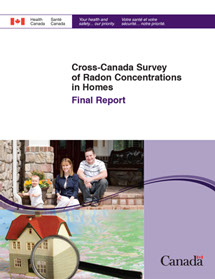
How Radon Can Enter Your Home
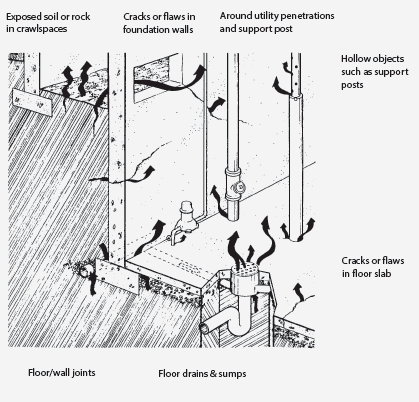
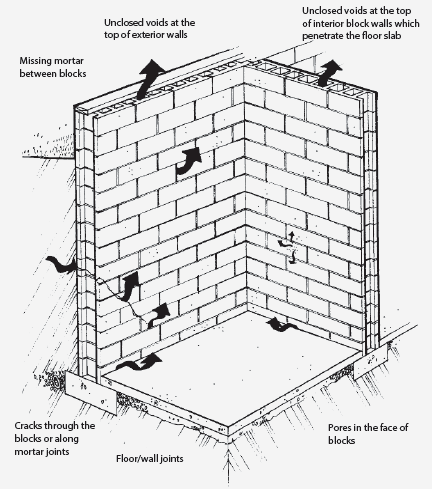
During most of the year, the air pressure inside your house is lower than in the soil surrounding the foundation. This pressure difference draws air and other gases in the soil, including radon, into the house.
Soil gas containing radon can enter a home any place it finds an opening or crack where the house contacts the soil. These cracks are present even in well-built and new houses.
Potential entry routes for radon in houses with poured concrete foundations include
Houses with concrete block foundation walls can have other entry routes such as:
Homes with less common types of foundations (e.g., concrete slab-on grade, stone, pressure-treated wood) may have other entry routes where openings or paths exist between the house and the soil. In many homes, regardless of the foundation type, some entry routes will be hidden. For example, they may be concealed by paneling, carpeting, appliances, wood framing or other objects.
In a few areas, large amounts of radon gas can be found in groundwater from private or small community wells. It can then be released into the air in a home when the water is agitated by activities such as showering, clothes washing or cooking.
Instead of wells, the water supply for larger communities is often drawn from open bodies of water. These sources tend to be low in radon.
Except in a few unusual cases, building materials used to construct a house are not a significant source of radon.
Source: RADON: A Guide for Canadian Homeowners
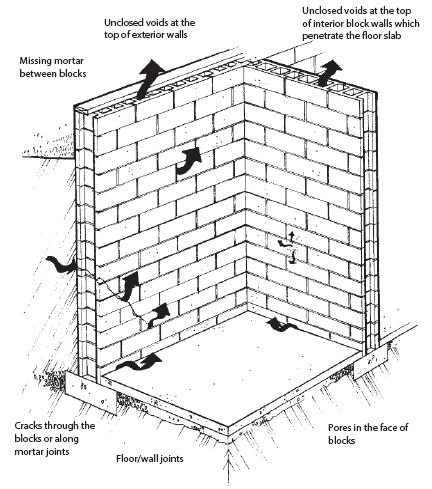
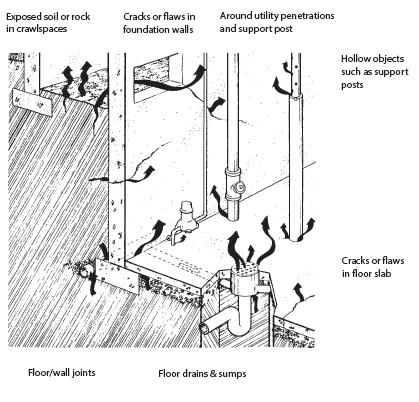
The Canadian Guideline for Radon Control
There is no regulation in Canada that governs what is deemed to be an acceptable radon gas level in a house. It is the choice of each homeowner to determine what level of radon gas exposure they are willing to accept.
Canadian Government, in conjunction with the territories and provinces, developed the following guideline to indicate when remedial action should be taken. This guideline was approved by the Federal Provincial Territorial Radiation Protection Committee in October, 2006:
Canadian Radon Control Guideline
o Remedial measures should be undertaken in a dwelling whenever the average annual radon concentration exceeds 200 Bq/m3 in the normal occupancy area.
o The higher the radon gas concentration, the sooner remedial measures should be undertaken.
o When remedial action is taken, the radon level should be reduced to a value as low as practicable.
o The construction of new dwellings should employ techniques that will minimize radon entry and facilitate post-construction radon removal, should this subsequently prove necessary
The average level of radon gas in outdoor air is about 10 Bq/m3. However, levels can occasionally reach several times this amount for short periods of time. Indoor radon levels typically range from about 30 to 100 Bq/m3 with an average concentration of 45 Bq/m3. However, in some locations radon can readily exceed 200 Bq/m3, and in a few cases levels have been found as high as 3000 Bq/m3.
Reducing indoor radon gas levels to be no more than outdoor levels is not yet technologically achievable. However, most homes today can be reduced to 75 Bq/m3 or less.
Source: RADON: A Guide for Canadian Homeowners
Which Homes Have a Radon Problem?
All homes have some radon gas. The levels can vary dramatically even between similar homes located next to each other.
The amount of radon in a home will depend on many factors such as:
o Soil Characteristics – Radon concentrations can vary enormously depending on the uranium content of the soil. Also, radon flows more easily through some soils than others.
o Construction Type – The type of home and its design affect the amount of contact with the soil and the number and size of entry points for radon. It also affects the rate of exchange of outdoor and indoor air.
o Foundation Condition – Foundations with numerous cracks and openings have more potential entry points for radon.
o Occupant Lifestyle – The use of exhaust fans, windows, fireplaces, etc. influences the pressure difference between the house and the soil that draws radon indoors. These factors also influence the rate of exchange of outdoor and indoor air.
o Weather – Variations in weather (e.g., temperature, wind, barometric pressure, precipitation, etc.) can affect the amount of radon that enters a home.
Because there are so many factors, it is very difficult to predict the radon level in a home.
The only way to determine whether your home has high radon gas levels is to test for it.
Source: RADON: A Guide for Canadian Homeowners
Cross-Canada Survey of Radon Concentrations in Homes

DOWNLOAD YOUR FREE COPY
Home
Radon Gas
Radon Videos
Radon Related Links
Radon Test Kit
Radon Gas Test
Mitigation - Existing Homes
Mitigation - New Homes
Myths vs. Facts
Canada's Radon Store
Radon Fans
Fan Installation Kits
Flexible Couplings
System Indicators
Radon Fan Accessories
Reduction System T Fitting
Radon Control
1780 West Broadway
PO Box 14047 Delamont Po
VANCOUVER, B.C., V6J 0B9

All rights reserved. 2012 - 2013 Radon Control, Vancouver, BC, CANADA
